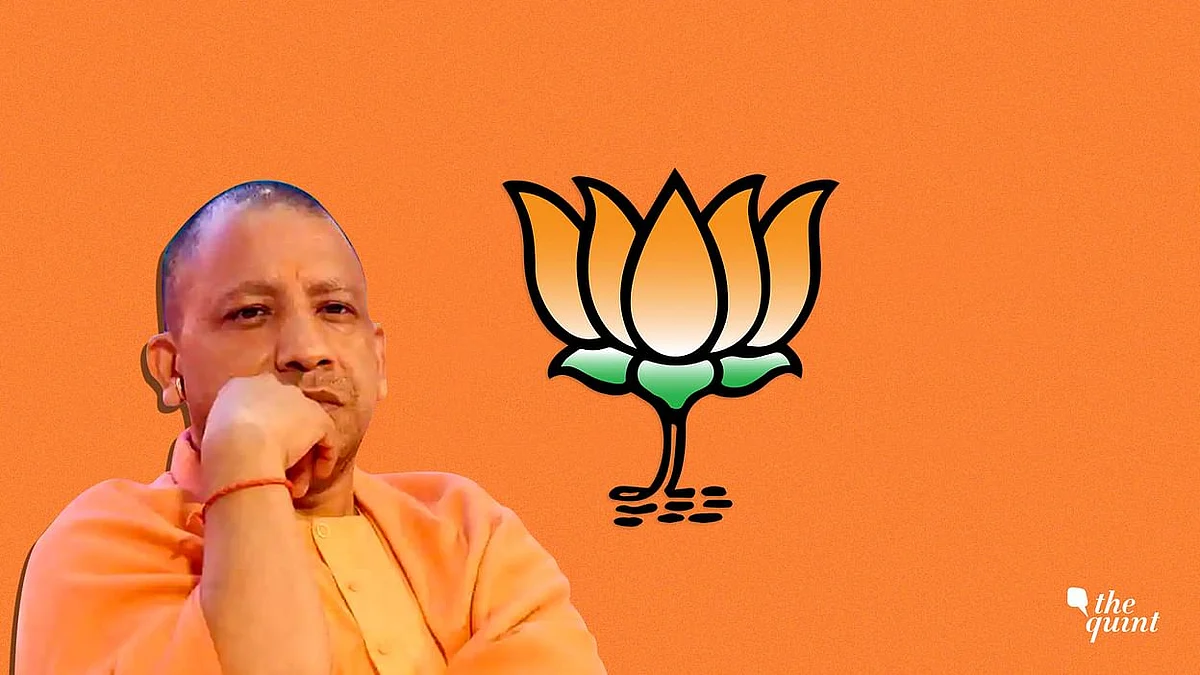
After BJP's Election Debacle in UP and the Hathras Stampede, is Yogi in Trouble?
Yogi’s enemies in Delhi will use his administration’s abject failure at Hathras to pursue their agenda.

advertisement
More than a month after the Bharatiya Janata Party’s (BJP's) electoral debacle in Uttar Pradesh, tensions between Chief Minister Yogi Adityanath and the party's high command continue to simmer.
Most recently, UP Deputy Chief Minister Keshav Prasad Maurya's remarks that "the party organisation is bigger than the government and nobody is bigger than the organisation," has triggered rumours about a rift within the BJP's state unit. It did not help that Maurya met BJP President JP Nadda on Tuesday, 16 July for almost an hour.
Several losing BJP candidates have complained to the bosses that politicians and officials said to be close to the chief minister did little to ensure the party’s success even though he campaigned widely for the party, paying lip service to the Prime Minister.
In turn, Yogi Adityanath is bitter that he was left out of strategic planning for the national elections in Uttar Pradesh. Despite winning a second successive term in the 2022 state assembly polls, he played no part at all in electoral planning sessions or candidate selection for 2024. He, along with all other chief ministers, was kept out of the BJP Parliamentary Board and also had no place in the election committee.
The CM is believed to have pointed this out to RSS chief Mohan Bhagwat at a closed-door meeting in Gorakhpur not long after the shocking results from Uttar Pradesh. Despite being left out, he communicated to Delhi a long list of three dozen party candidates with slim winning chances wrongly selected, but he was pointedly ignored.
The Tragic Hathras Stampede Has Made the Situation Worse for Yogi
This month, the latent strains between the state government and the Centre have been aggravated by a tragic stampede at Hathras that killed 122 members of a massive religious congregation. Most of these were women, who assembled to hear a self-styled godman, former police constable Suraj Pal, worshipped by his followers as Bhole Baba.
The state government sought to defuse the public furore that followed by hastily setting up a Special Investigation Team. They blamed the organisers of the religious function and local officials for the overcrowding and mismanagement leading to the stampede. A few local organisers of the event were arrested, and junior local officials and policemen were suspended, but these measures were seen as an extremely tepid response to the colossal administrative failure that was largely responsible for the catastrophe.
A report in the Amar Ujala, for instance, revealed that senior officials were informed by the local police inspector as early as three days before the event that at least one lakh people were expected to congregate at the satsang. However, only 69 policemen were sent to manage this vast crowd. When the local police intelligence unit sent frantic messages to the Hathras district authorities on the day of the event that numbers were swelling fast, they received no response.
Only one fire brigade engine and two ambulances were deployed, while merely four traffic policemen were trying to untangle the 500 buses and more than 1500 small vehicles that jammed the highway next to the satsang site. Senior officials continued to twiddle their fingers when informed that the situation was getting out of control. The sevadars (volunteer force of the Bhole Baba), dressed in bright pink uniforms, refused to let the meagre police force come inside the event to supervise crowd management.
According to a Jagran report, the real trigger for the stampede lay in the single road connecting the event site to the highway. This required the godman and his convoy to leave through the crowd after finishing his sermon. As the crowd surged to get closer to the departing baba, his security men pushed back, resulting in a stampede. To make matters worse, in the ensuing stampede, many people tumbled down on each other in a drain below. This might explain why women, who were not strong enough to keep their balance, were the main victims.
Yogi is further handicapped by the fact that any attempt to shift the blame from his administration to the Bhole Baba, whose staff and security forces are certainly culpable, has serious political consequences since the godman is a Dalit and has a vast lower caste following in several parts of Uttar Pradesh. Indeed, a common refrain at various sameeksha meetings dissecting the BJP's losses in the recent polls has been that the party has lost significant support among lower castes.
There is little doubt that Yogi’s enemies in Delhi would use his administration’s abject failure at Hathras to pursue their political agenda to topple him.
(The writer is a Delhi-based senior journalist and the author of ‘Behenji: A Political Biography of Mayawati’. This is an opinion piece. The views expressed above are the author’s own. The Quint neither endorses nor is responsible for the same.)
(At The Quint, we question everything. Play an active role in shaping our journalism by becoming a member today.)
- Access to all paywalled content on site
- Ad-free experience across The Quint
- Early previews of our Special Projects
Published: undefined